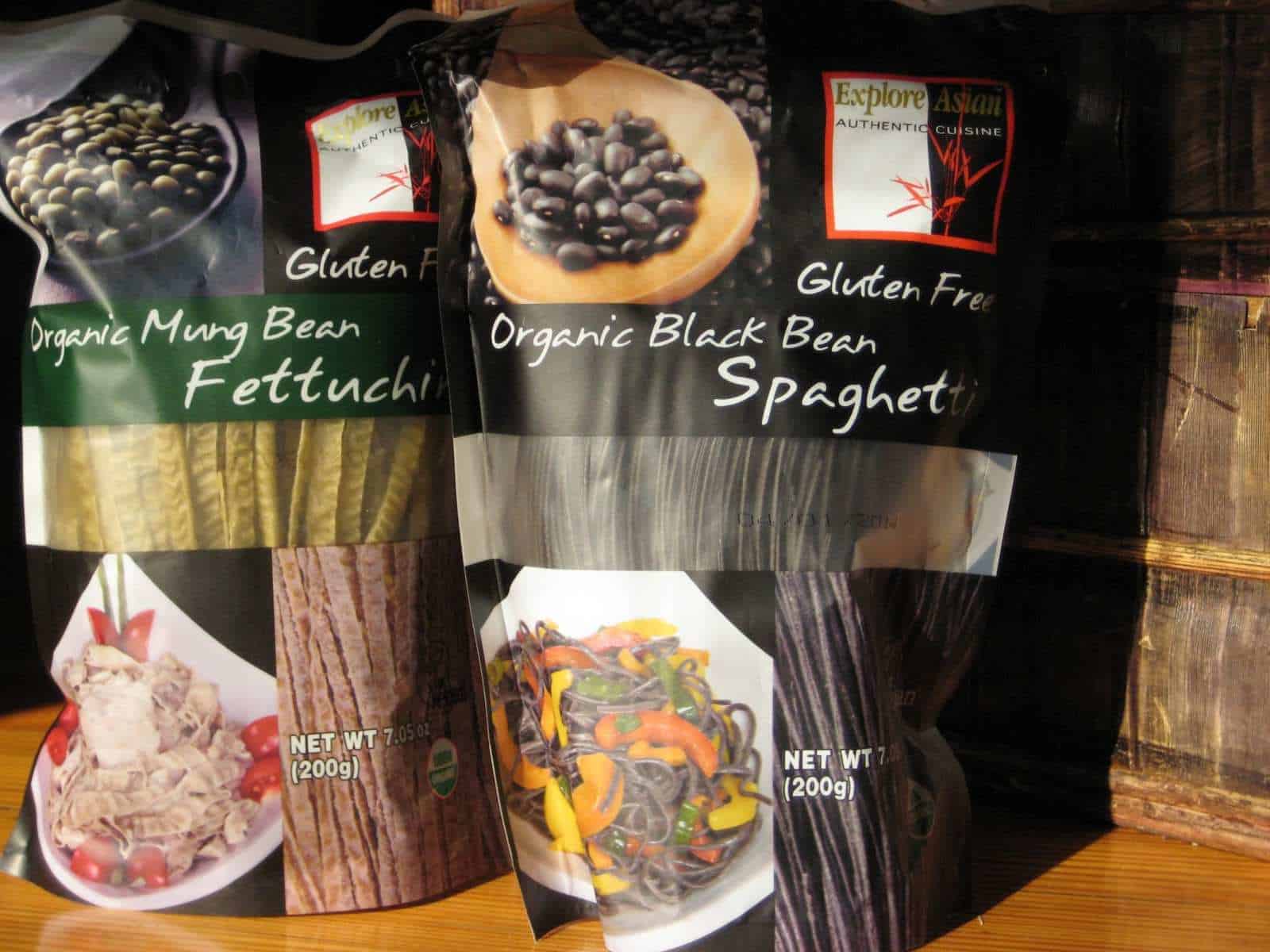Pasta Becomes a Protein!
How Does Pasta Become a Protein? Make it from beans instead of grains.
Explore Asian (R) bean-based pastas (black bean spaghetti, edamame spaghetti, and mung bean fettuccine) solve three common nutrition problems:
- Provides pasta lovers an alternative to carbohydrate-dense, blood sugar raising grain-based pastas
- Provides another wonderful plant-based protein source
- Provides an iron source for plant-based diets
Grain-Based Pasta Compared to Bean-Based Pasta
(ranges shown between varieties; serving size based on 15 grams of carbohydrate or 1C in CARE)
Grain-Based Pasta(whole wheat, rice, quinoa, spelt) |
Bean-Based Pasta(black bean spaghetti, mung bean, edamame) |
|
| Serving Size | 1/3 cup cooked | 1 cup cooked |
| Protein | 2-3 grams | 20-25 grams |
| Carbohydrate | 15 grams | 15-17 grams |
| Fiber | 2-3 gram | 11-15 grams |
| Iron (non-heme*)
(*enjoy with a vitamin C source to enhance absorption; i.e. citrus, kiwi, red pepper) |
3-5% | 30-36% |
This makes an interesting turn of the tables.
With grain-based pastas, if you eat more than 1-2 servings you could easily exceed your target carbohydrate servings for that meal; with bean-based pastas, eating more than 1-2 servings would make you exceed your protein servings!
Just 1 cup of bean-based pastas, like black bean spaghetti, provide all the protein for the meal. This is important to remember when you compare price. Bean-based pastas will look more expensive than grain-based, but because they serve as the protein of the meal they are actually much less expensive.
Serving Suggestion – Ready in Less than 10 Minutes
The texture of bean-based pastas (much like tofu based and other ‘noodle’ alternatives) is much different than grain-based.
My recommendation is to not expect bean-based pastas to be a full substitute, but rather to be a pasta extender. Remember they are your protein in the meal.
Here are some ideas:
- Meal 1 | Pasta Stir-fry (yields 1 portion – 3C, 3P, 3F)
- Mix 1 cup of cooked black bean spaghetti with 1/3 cup of grain-based pasta, toss with 1 tbsp olive oil and a package of (cooked) frozen stir-fry veggies (that little bit of traditional pasta adds just enough texture to make the meal more satisfying)
- Meal 2 | Ramen Noodle Soup (yields 2 portions – 3C, 3P, 3F each)
- Mix 2 cups of mung bean fettuccine or edamame spaghetti with 1 package of Thai Kitchens rice ‘Ramen’ noodle soup, serve with a nice large salad made from leafy and tender veggies
- Snack | Asian Salad (yields 1 portion – 1C, 1P, 1F )
- Toss 1/3 cup of mung bean fettuccine with 1 tsp of toasted sesame oil, sprinkle of sesame seeds, fresh scallion slices, and slices from one orange or Clementine
Enjoy and please feel free to share your favorite uses of bean-based pasta in the comments section!
Warmly,



